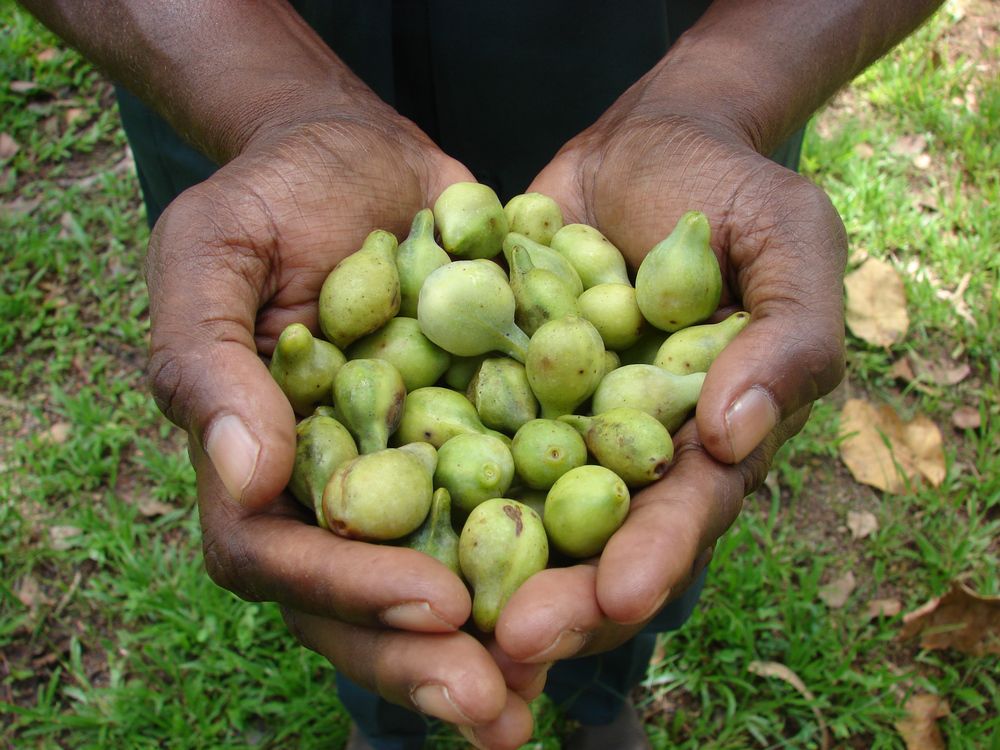Bush fruit may combat Alzheimer's
 With its high antioxidant strength, the Kakadu Plum may prove a secret weapon the fight against Alzheimer’s. PHOTO: ANNIE TAYLOR
With its high antioxidant strength, the Kakadu Plum may prove a secret weapon the fight against Alzheimer’s. PHOTO: ANNIE TAYLOR
THE Aboriginal inhabitants of Kakadu, the Bininj, have long known of the health benefits of the native Kakadu Plum. Jenny Hunter from Kakadu Culture Camp says the bush plum, or An-morluk, is “number one bush tucker”. It has long been used as a traditional food and bush medicine and for skin sores, Ms Hunter said.
And now researchers in Western Australia have found the native fruit could provide the most powerful antioxidant treatment yet in the fight against Alzheimer’s disease. Professor Ralph Martins, Chair of Edith Cowan University’s Foundation of Aging and Alzheimer’s Disease, told
Science WA the Kakadu plum’s strong antioxidant properties could protect brain neurons from toxic agents. The plum’s natural strengths could make it a powerful tool in the fight against Alzheimer’s, he said.
“When the plant’s environment is very harsh, they have to produce powerful antioxidants to protect themselves, and I think that’s what’s happening with the Kakadu plum, so I am very, very excited,” Prof. Martins said. “Because it’s a natural compound it could get to clinical trial faster, but what we have to do first is see in the laboratory if it can protect brain neurons from toxic agents — the one in Alzheimer’s is beta-amyloid, which kills brain cells. That would give us confidence that it’s an attractive candidate for further trials.”
He said early indications were that the Kakadu Plum (Terminalia ferdinandiana) could have antioxidant properties up to seven-times greater than curcumin — the chemical compound in turmeric currently in clinical trials as an Alzheimer’s treatment. While curcumin is a powerful antioxidant, the Kakadu plum’s ‘protective ability’ makes it potentially much more powerful.
Ms Hunter said the Kakadu Plum is best eaten after it falls to the ground, not off the
tree.
“We eat An-morluk when it’s ripe in Banggerreng season, straight after the ‘wet’ (Gedjewg),” Ms Hunter said. “But if you pick it from the tree when it’s green and hard it’s no good, you have
to wait until it goes pale and falls on the ground, that’s when it’s best. Some Balanda are now making Kakadu Plum jam out of it, but we just eat it straight off the ground and in the old
days Bininj would also mix the bark with water and use it as a bush medicine for skin sores. We’ve got lots of the Terminalia trees in Kakadu, the ferdinandiana species is mainly found in our woodland areas where there’s no flooding, as they can only tolerate inundation for a month or two.
“Along with the Andutmi (Green Plum), it’s number one bush tucker.”
Prof. Martins said trails with the Kakadu Plum could start as early as mid-2015 if funding
could be secured. It is estimated three million Australians will have a form of dementia by 2050, with Aboriginal people among those most at risk.
Prof. Martins said while Kakadu plums currently grew in remote locations, they could be cultivated more widely for medical purposes. He applauded former WA Chief Scientist Lyn Beazley for linking him to a project spearheaded by UWA’s Dr Liz Barbour which has provided him with fruit samples for his research.
Dr Barbour’s project aims to develop the Kakadu plum tree as a commercial crop to boost Indigenous communities. She said health benefits from the fruit’s high vitamin C and antioxidant capabilities had already attracted international attention to the project.
“Health-market demand for natural vitamin C and antioxidants is creating a market for Kakadu plum fruit that is a challenge to support reliably from wild harvest,” Dr Barbour said.

